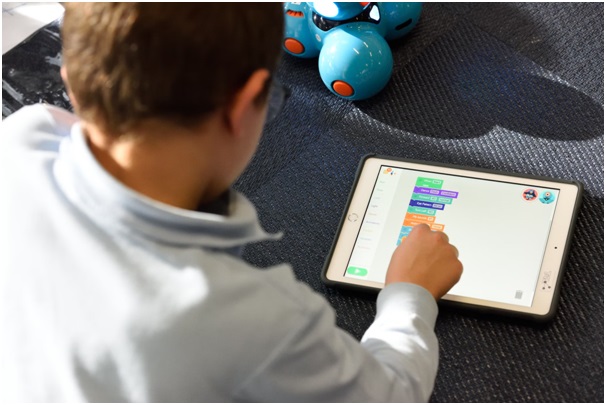How Gamification Can Enhance Learning
One of the key tasks for every teacher, educational institution, or author of materials for learning is to build the process in such a way that students will stay motivated and won't give up after facing the first difficulties.
 Picture 1 of How Gamification Can Enhance Learning
Picture 1 of How Gamification Can Enhance Learning
There can be different approaches to engaging and motivating students but in this article, we'd like to talk about one of the most popular of them. It is gamification that presupposes adding elements that are typical for games to non-gaming processes and environments.
While this method is often applied by teachers in classrooms (for example, when all students are divided into groups and lessons are organized in the form of a competition), it can be also used in e-learning. A typical example is language learning apps that offer users various bonuses and rewards for achievements and allow them to compare their results with other learners.
The popularity of gamification and its efficiency is explained by human nature. We love the feeling of victory. We are really inspired when we see that our efforts bring us results and when we can get some prizes (even something very simple like digital badges), we are ready to work more. And that's true not only about learning. Various studies have already proved it. For example, it was found out that 90% of people admitted that they become more productive at work thanks to gamification, while 67% of students shared that the gamified learning process is much more engaging if compared with traditional classes.
Gamification elements that you should consider
Now let's have a look at gamification elements and features you can apply if you are planning to build an e-learning solution.
- Points. It is a very simple idea but it really works. Just allow learners to earn points for fulfilling tasks, passing quizzes, or completing other offered activities. Thanks to collecting these points, users will feel a spirit of competition and will have a desire to reach new heights.
- Leadership boards. Such boards should display the scores of learners. When a person sees his or her name among the names of other users, it is highly likely that this student will be encouraged to outperform all the peers to take one of the first positions.
- Badges. You can make it possible for learners to get digital badges for reaching the set objectives or specific milestones. Such badges can be displayed on their profiles or you can also offer them to get digital certificates that will reflect their accomplishments.
- Quests and challenges. You can create special quests, contests, quizzes, and other challenges that users will be able to complete. They can be presented in the form of a task or a mission and to cope with them, a user will need to demonstrate some specific skills or knowledge.
- Storytelling. You can incorporate narratives and storytelling into the offered e-learning journey. This method will help to create an immersive experience for learners. Thanks to it, users will stay interested in the learning process which will encourage them to devote more time to learning activities. While the quality of the storytelling should stay high, due to it, you shouldn't sacrifice the value and accuracy of the learning content. The quality of learning materials and the provided information should be your highest priority.
- Personalization and avatars. One more idea that you can use is to let users create and further customize their avatars. They will serve as a digital representation of each person in the digital learning environment. Thanks to them, learners will feel a stronger connection to the offered content.
- Social features. These features are not directly related to gamification. Nevertheless, they can greatly boost the effect of gamification and drive engagement and motivation. It will be a very good idea to add some functionality (like online chats, forums, and groups) that will allow users to connect with each other, communicate, exchange ideas, and discuss their results and achievements.
What do all these efforts bring to learners? Why do you need to care about gamification? Here are a couple of benefits you should know about:
- Increased motivation
- Better engagement
- Easier progress tracking
- Advanced analytics
- Adaptive learning
- Personalized process
- Collaboration and social learning
- Immediate feedback
- Goal setting
- Higher retention
Final word
Thanks to introducing gamification elements to your e-learning apps, you can greatly enhance the learning experience for your users and achieve their higher satisfaction. Nevertheless, it is vital to deeply analyze the expectations, needs, and requirements of your target audience before incorporating any elements of this kind into the learning process. Gamification should motivate learners instead of distracting people from their studies. That's why we strongly recommend you deeply test your idea before transforming it into a real product and making it publicly available.
You should read it
- How to rename Facebook on the computer
- How to Use Fraps to Take a Screen Capture
- Intel released the 10th generation H series CPUs for laptops, promising outstanding performance
- How to paste data into non-hidden cells, ignoring hidden cells
- Microsoft patch prevents Windows 10 1903 and 1090 users from updating to newer versions
- Apple denies that iPhone can be brute force to open passwords easily
- 10 ways of eye muscle training and vision enhancement are not to be missed
- 5 best family NAS devices for home data security, priced from 4.5 million
- How to customize Touchpad on Windows 10 Creators Update
- What are Zip files? How do Zip files work?
- 4 Advanced PivotTable Functions for Excel Data Analysis
- How to delete an email account from Outlook
May be interested

How to create an interactive timeline using CSS and JavaScript

How to implement pagination for app in Vue

10 Fundamental App Design Principles Every App Development Company Should Know

How to implement infinite scrolling and pagination with Next.js and TanStack Query

How to create a movie ticket booking system using Django

How to design a HEX to RGB converter using ReactJS






 Ways to enhance learning on Windows
Ways to enhance learning on Windows Apply the following five effective ways to increase your learning ability many times
Apply the following five effective ways to increase your learning ability many times 7 Ways to increase memory and ability to concentrate in learning
7 Ways to increase memory and ability to concentrate in learning How to enhance photos with Samsung's AI-powered Galaxy Enhance-X app
How to enhance photos with Samsung's AI-powered Galaxy Enhance-X app Top 6 outstanding online learning trends in 2018
Top 6 outstanding online learning trends in 2018 Why the more we read aloud, the faster we remember?
Why the more we read aloud, the faster we remember?